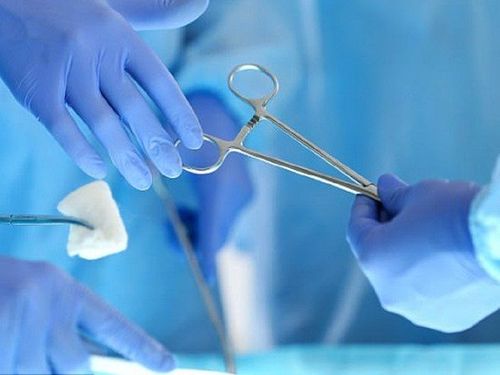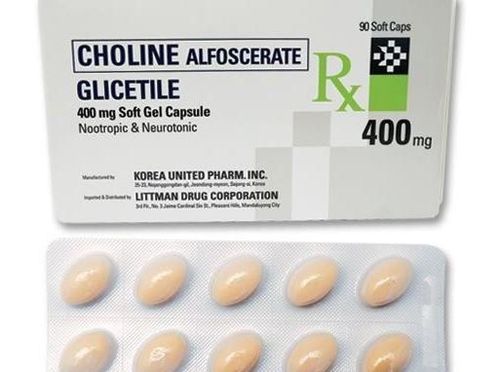This is an automatically translated article.
Traumatic brain injury is a type of trauma that carries a very high risk of death. When a person has an accident that leads to traumatic brain injury, especially with multiple injuries, it is necessary to immediately take him to the hospital for a comprehensive examination and timely treatment.1. Traumatic brain injury
Traumatic brain injury carries a very high risk of death. The main causes of traumatic brain injury are traffic accidents, labor accidents, daily-life accidents, disaster accidents, social accidents, head trauma due to childbirth... In which, death due to traumatic brain injury. Traffic accidents accounted for 60%, of which half died before being hospitalized. With the chaotic traffic situation, lack of knowledge about traffic safety, the rate of traffic accidents in Vietnam is ranked as one of the top countries in the world.Therefore, traumatic brain injury is a concern for the medical industry in particular and society in general. In order to limit tragic accidents caused by accidents, as well as cases of traumatic brain injury, Vietnam and countries around the world are using measures to control the above situation such as: propaganda, campaign to raise awareness of road users, wear helmets, obey traffic safety laws...
When an accident occurs, the victim is at risk of head injury in the area outside the skull or inward skull area. Extracranial lesions include: laceration of the scalp, subcapsular hematoma, usually > 16 years old, subgalea hematoma: < 16 years old, subperiosteal hematoma: birth trauma. Injuries from the skull to the inside include: skull fracture, skull fracture, skull base fracture, epidural hematoma, subdural hematoma, intracerebral hematoma, cerebral contusion, intraventricular hemorrhage, hemorrhage brainstem hemorrhage, diffuse axonal damage: often severe, possibly fatal, and many other dangerous complications.
In traumatic brain injury, cerebral hematoma is the most frequent lesion. If the size of this blood clot is large, causing pressure on the brain, the doctor will prescribe surgery to remove the hematoma and stop the bleeding. In the case, the patient has an epidural and subdural hematoma, surgery is not difficult, but the case of a patient with a hematoma in the brain parenchyma will require complicated surgical techniques, resuscitation and Post-operative treatment is also more difficult.

Chấn thương sọ não chứa đựng nguy cơ tử vong rất cao
2. Steps to perform traumatic brain injury surgery
The first rule when treating traumatic brain injury is to quickly clear the airway. It is necessary to comprehensively evaluate all injuries to avoid omissions that affect the survival of the patient.2.1 First aid and immediate care on admission As soon as the patient is admitted to the emergency room, the doctor conducts a comprehensive examination to provide emergency treatment and prioritize the airway, confirm the diagnosis, and select the treatment method .
Until the results of X-ray of the cervical spine, the doctor will fix the cervical spine from the beginning for the patient, and at the same time, clear the airway: suction fluid in the mouth and suction through the nose. If intubation or tracheostomy is necessary when there is a fracture of the upper or lower jaw to ensure adequate ventilation and breathing and ventilation. Control bleeding, ensure circulation (systolic blood pressure > 9). Assess rapid neurological signs such as alertness, voice, pain, correct response or not.
All measures for initial examination and resuscitation of the patient must be performed in parallel.
Indications for skull X-ray: All head injuries must be X-rayed of the skull, in order to evaluate the lesions of the skull bones. In the case of appointing a CT Scan of the head immediately upon admission, it is not necessary to take a skull X-ray because a CT scan of the head usually opens the bone window to fully investigate the skull fracture.
2.1.1 Some measures to reduce intracranial pressure Surgical removal of intracranial hematoma When performing surgery to remove hematoma, if the pressure in the brain is too great, the doctor must cut part of the skull, send preserved in a tissue bank. The process of removing the skull cap to preserve it in a tissue bank and before re-implanting the patient's skull, the surgeon decides whether the skull is still good and can it be preserved?
Depending on the patient's health situation as well as the patient's ability to recover, the doctor reassembles the skull cap. Some patients will have a skull fitted at 6 weeks after the first surgery, some need to wait another 6 months - 1 year before they can have surgery to put the skull back on. After craniofacial surgery, a craniotomy is performed for aesthetic purposes and to protect the soft tissue (meninges and brains) below the bone defect.
If the craniofacial defect is small, it can be kept intact, without the need to reconstruct the skull cap. In order to quickly recover both physically and mentally, the patient should absolutely avoid stimulants of the nervous system, such as alcohol. Exercise should be continued through physical therapy programs if mobility is still difficult.

Khi tiến hành phẫu thuật lấy tụ máu, nếu áp lực trong não quá lớn, bác sĩ phải cắt một phần hộp sọ
Decompression skull expansion This is a quick and effective way to reduce intracranial pressure immediately after decompression. The procedure is to expand the skull and decompress the frontal lobes on both sides or the temples - forehead - on one or both sides depending on the lesion.
Osmotherapy Barbiturate Sedation: Barbiturates reduce cerebral metabolism and decrease intracranial pressure, in fact, there are no clinical trials that fully and unequivocally prove it. benefits of barbiturates. Prolonged use of barbiturates will delay the patient's consciousness and increase the risk of nosocomial infections
Hyperventilation Routine and prolonged use of hyperventilation in head trauma patients causes worse outcomes than patients with normal blood CO2. This is probably due to decreased cerebral blood flow leading to secondary cerebral ischemia.
Measures to lower body temperature (hypothermia): Hypothermia means keeping the temperature at 30 - 33 degrees Celsius accompanied by prolonged ventilation and easy to cause nosocomial infections. Vinmec International General Hospital is one of the hospitals that not only ensures professional quality with a team of leading doctors, modern equipment and technology, but also stands out for its examination and consulting services. and comprehensive, professional medical treatment; civilized, polite, safe and sterile medical examination and treatment space.
Please dial HOTLINE for more information or register for an appointment HERE. Download MyVinmec app to make appointments faster and to manage your bookings easily.













